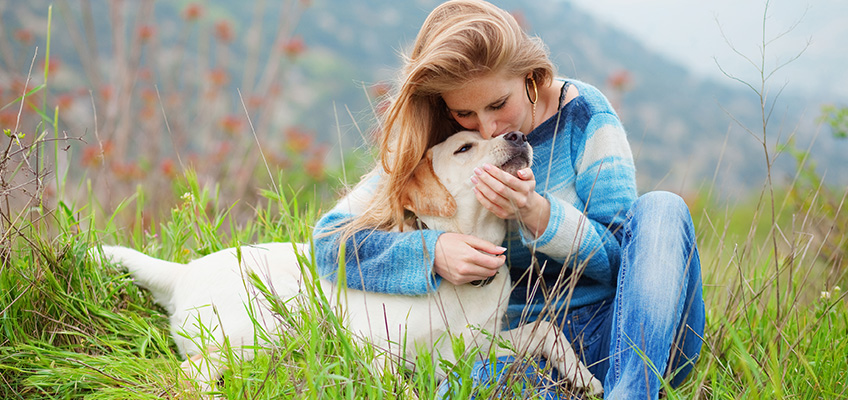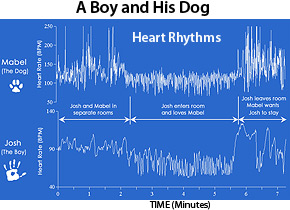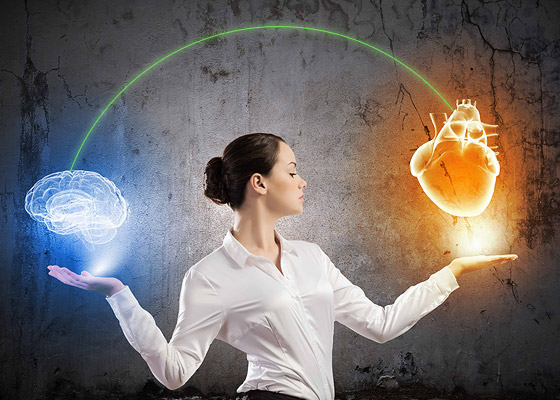
Pets: Making a Connection That’s Healthy for Humans
We feed them, groom them and sometimes even dress them. We coddle them in a multitude of ways, taking great pains to make sure they are healthy and worry when they are not. When they pass on, the loss for many is as profound as any other. Perhaps we do so much for our pets because, according to a variety of sources, they do so much for us.
Naturally, you would expect the American Veterinary Medical Association, the nonprofit Delta Society – for the connection of humans and animals – and the Humane Society to extol the many benefits of having pets. But the U.S. Centers for Disease Control in Atlanta also gives the family dog, cat and or other pet a hearty endorsement.
The CDC notes on its Web site: “Pets can decrease your blood pressure, cholesterol levels, triglyceride levels, feelings of loneliness. Pets can increase your opportunities for exercise and outdoor activities, opportunities for socialization.”
Benefits like those may explain why pet ownership has risen from 56% of American households in 1988 to 62%, or 71.4 million households, in 2008, according to the 2009/2010 National Pet Owners Survey conducted by the American Pet Products Association.
A lot has been written in the last few decades about the benefits of having pets, but it seems there’s more to our relationship with them than many people realize.
A Boy and His Dog
By now, many people are familiar with the HeartMath Institute’s widely publicized research showing heart-brain interactions between persons in close proximity: couples sleeping; a mother and her infant; individuals in coherent states.
The institute also has found that a type of heart-rhythm entrainment, or synchronization, can occur in interactions between people and their pets. A lot of pet lovers surely will appreciate the results of an experiment HMI Director of Research Dr. Rollin McCraty conducted with his 15-year-old son. McCraty did the experiment with son Josh and the boy’s dog, Mabel, at the HMI Research Center in Boulder Creek, Calif., using electrocardiogram monitors to record heart-rhythm data when the pair were together and apart.
“Here we used two Holter (electrocardiogram) recorders, one fitted on Mabel and the other on Josh,” McCraty wrote in his paper, The Energetic Heart: Bioelectromagnetic Interactions Within and Between People. “We synchronized the recorders and placed Mabel in one of our labs.”
Next, McCraty wrote, “Josh then entered the room and sat down and proceeded to consciously feel feelings of love towards Mabel. … When Josh entered the room where Mabel was waiting and consciously felt feelings of love and care towards his pet, his heart rhythms became more coherent, and this change appears to have influenced Mabel’s heart rhythms, which then also became more coherent.”
If you’ve ever wondered what goes on in your dog’s mind, or heart, when you leave home, this may help: “When Josh left the room, Mabel’s heart rhythms became much more chaotic and incoherent, suggesting initial separation anxiety,” McCraty wrote in the paper, which is now a HeartMath scientific monograph.

The top of the graph shows the dog’s (Mabel) shift when the boy (Josh, shown in the lower part of the graph) used the Heart Lock-In Technique to shift into coherence. There was no physical contact between the dog and boy.
Regarding these connections from person to person and between people and pets, McCraty later wrote, “Although more research in this area is still to be done, I do feel that we can affect our immediate environment. It appears that there is a type of communication occurring between people above and beyond body language or verbal communication. I believe we’ll see in future research studies that we are affecting each other’s moods and attitudes, both positively and negatively by the electromagnetic fields we radiate.”
“In our work with pets and their owners, we’re seeing that a pet owner can create what we call a heart-filled environment when practicing heart-focused techniques (a cornerstone of HeartMath tools and technology). The pets respond by becoming more affectionate, more animated and more connected with the pet owner.”
Read a summary of the HMI Director of Research Dr. Rollin McCraty’s The Energetic Heart: Bioelectromagnetic Communication Within and Between People or obtain the complete Energetic Heart in an e-booklet.
Does Your Dog Know You’re Coming Home?
A 1998 paper titled A Dog That Seems To Know When His Owner is Returning: Preliminary Investigations, by well-known biochemist and author Rupert Sheldrake and dog owner Pamela Smart, contains some observations to which many a dog owner can relate.
In 1991, whenever Smart was away from home, her parents began to notice that her dog, Jaytee, seemed to sense when she was returning. Jaytee appeared to wait for her at a window, “beginning around the time she was setting off to come home,” Sheldrake and Smart wrote in the paper’s abstract.
Smart and her parents made formal observations and took notes on 96 occasions from May 1994 to February 1995 on Jaytee’s reactions to Smart’s travels of up to 51 kilometers (31.68 miles) from home.
“Jaytee reacted 10 minutes or more in advance of PS’s (Pamela Smart’s) return on 82 occasions, and showed no anticipatory reaction on 14,” the abstract stated. “There was a highly significant correlation between the time at which the dog reacted and the time at which PS set off homewards. Jaytee’s reactions did not seem to be attenuated by PS’s distance.”
They observed that Jaytee had similar reactions on four of five occasions when Smart traveled by means not used during the other observations, including by taxi.
“He also reacted on 4 out of 4 occasions when she set off for home at randomly selected times. In one of these experiments, both Jaytee’s reactions and PS’s movements were recorded on videotape, and showed that the dog reacted 11 seconds after PS was told to go home at a randomly selected time previously unknown to her. The evidence suggests that Jaytee’s reactions depended on an influence from his owner detected by the dog in a manner currently unknown to science.”
Can Your Pet Make You Healthier?
More than two decades ago, the National Institutes of Health (NIH) held an important workshop to assess the health benefits of pets for humans. The results, provided in great detail in the now widely circulated publication, The Health Benefits of Pets, left no doubt about the participants’ views on importance of having pets in our lives.
“Throughout history animals have played a significant role in human customs, legends, and religions,” the publication began. “Primitive people found that human-animal relationships were important to their very survival, and pet-keeping was common in hunter-gatherer societies. In our own time, the great increase in pet ownership may reflect a largely urban population’s often unsatisfied need for intimacy, nurturance, and contact with nature. … In 1792, animals were incorporated into the treatment for mental patients at the York Retreat, England, as part of an enlightened approach attempting to reduce the use of harsh drugs and restraints.
“The first suggested use of animals in a therapeutic setting in the United States was in 1919 at St. Elizabeths Hospital in Washington, D.C., when Superintendent Dr. W.A. White received a letter from Secretary of the Interior F.K. Lane suggesting the use of dogs as companions for the psychiatric hospital’s resident patients.”
Since then animals have been employed for a wide range of therapeutic uses the publication noted, including cardiovascular health, child development and with older people among others – and not only dogs and cats. They were used extensively as “companion animals” toward the end of World War II at the Army Air Corps Convalescent Hospital at Pawling, N.Y. “Patients recovering from war experiences were encouraged to work at the hospital’s farm with hogs, cattle, horses, and poultry. After the war, modest efforts began in using animals in outpatient psychotherapy.”
In the more than half century that has passed since that war, millions of pets have connected with people in all walks of life and circumstances to provide unconditional love, loyalty, companionship and therapy for all sorts of debilitating conditions – in war and peace. Today researchers, doctors, psychologists, sociologists, animal lovers and many others concur. Hospitals, nursing homes, sanitariums and a host of other institutions embrace the “house pet” for the therapeutic good of clients and staff.
Of course, all the research into the bonds between humans and animals is just catching up with what many have already experienced and understood intuitively through their deep relationships with pets.

